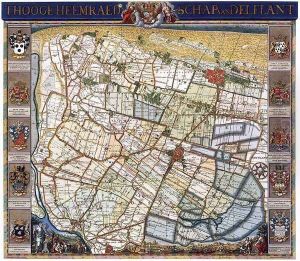Nicolaas Samuel Cruquius Paintings
Nicolaas Samuel Cruquius, also known by his Latinized name Nicolaus Samuelis Cruquius, was a Dutch land surveyor, cartographer, and meteorologist, rather than a traditional artist. He was born on December 2, 1678, in Westwoud, a small town in the Dutch Republic, and is best known for his contributions to the field of hydrography and water management in the Netherlands.
Cruquius studied philosophy and medicine at the University of Harderwijk and later at Leiden University. His interests, however, extended far beyond these fields. He was particularly fascinated by the challenges of water management in the low-lying regions of the Dutch Republic, which were prone to flooding. This concern led him to focus on the study of rivers and the development of methods to control water levels for the benefit of agriculture and urban planning.
In 1706, Cruquius began working for the water board of Rijnland. He was tasked with mapping the area around Haarlemmermeer, a large lake that posed a significant flooding threat to the surrounding regions. Cruquius created detailed maps and plans, and he proposed various schemes for draining the lake, which were initially not realized due to the enormous cost and technical challenges involved.
Cruquius is also remembered for his meteorological observations. From 1706 until his death, he maintained detailed records of temperature, atmospheric pressure, and precipitation, making him one of the early pioneers in systematic weather observation. His work laid the groundwork for future meteorological studies in the Netherlands.
Although not an artist in the conventional sense, Cruquius's maps and technical drawings exhibit a high level of craftsmanship and were critical in the planning and execution of water management projects. His work contributed significantly to the Dutch expertise in controlling water, which is still renowned to this day.
Nicolaas Samuel Cruquius never married and lived a life dedicated to his scientific pursuits. He died on February 5, 1754, in Spaarndam, the Netherlands. His legacy includes the Cruquius Museum, located in the Cruquius pumping station, one of the steam-powered pumps that eventually helped to drain the Haarlemmermeer, turning his visionary plans into reality.

